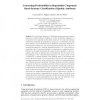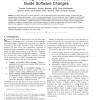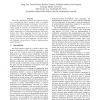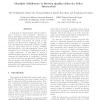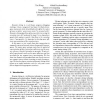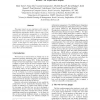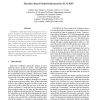ICSE
2004
IEEE-ACM
14 years 11 months ago
2004
IEEE-ACM
One of the main objectives of developing component-based software systems is to enable efficient building of systems through the integration of components. All component models def...
ICSE
2004
IEEE-ACM
14 years 11 months ago
2004
IEEE-ACM
We apply data mining to version histories in order to guide programmers along related changes: "Programmers who changed these functions also changed...." Given a set of e...
ICSE
2004
IEEE-ACM
14 years 11 months ago
2004
IEEE-ACM
The idea of synthesizing statecharts out of a collection of scenarios has received a lot of attention in recent years. However due to the poor expr essive power of
ICSE
2004
IEEE-ACM
14 years 11 months ago
2004
IEEE-ACM
To facilitate software maintenance and evolution, a helpful step is to locate features concerned in a particular maintenance task. In the literature, both dynamic and interactive ...
ICSE
2004
IEEE-ACM
14 years 11 months ago
2004
IEEE-ACM
Dynamic slicing algorithms can greatly reduce the debugging effort by focusing the attention of the user on a relevant subset of program statements. Recently algorithms for forwar...
ICSE
2004
IEEE-ACM
14 years 11 months ago
2004
IEEE-ACM
One of the challenging problems for software developers is guaranteeing that a system as built is consistent with its architectural design. In this paper we describe a technique t...
ICSE
2004
IEEE-ACM
14 years 11 months ago
2004
IEEE-ACM
A holy grail of component-based software engineering is "write-once, reuse everywhere". However, in modern distributed, component-based systems supporting emerging appli...
ICSE
2004
IEEE-ACM
14 years 11 months ago
2004
IEEE-ACM
Dynamic slicing is a well-known program debugging technique. Given a program P and input I, it finds all program statements which directly/indirectly affect the values of some var...
ICSE
2004
IEEE-ACM
14 years 11 months ago
2004
IEEE-ACM
This paper reports on our experiences with using the emerging web service technologies and tools to create a demonstration information broker system as part of our research into i...
ICSE
2004
IEEE-ACM
14 years 11 months ago
2004
IEEE-ACM
FLAVERS is a finite-state verification approach that allows an analyst to incrementally add constraints to improve the precision of the model of the system being analyzed. Except ...
